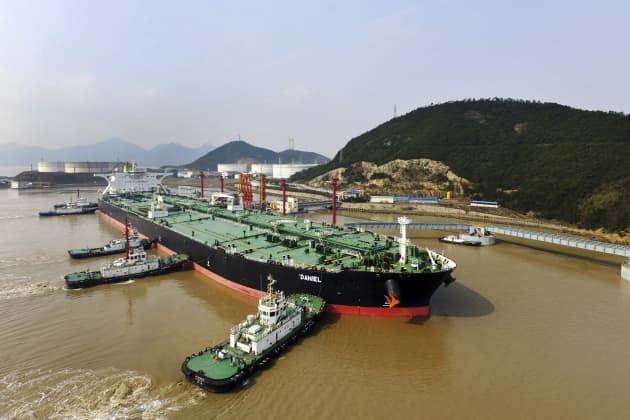Exxon Mobil Corporation has estimated second quarter 2019 earnings of $3.1 billion, compared with $4 billion a year earlier.
Earnings included a favourable identified item of about $500 million, reflecting the impact of a tax rate change in Alberta, Canada. Capital and exploration expenditures were $8.1 billion, up 22 percent from the prior year, reflecting key investments in the Permian Basin.“We continue to make significant progress toward delivering our long-term growth plans,” said Darren W. Woods, ExxonMobil chairman and chief executive officer. “Our new U.S. Gulf Coast steam cracker is exceeding design capacity by 10 percent, less than a year after startup. Our upstream liquids production increased by 8 percent from last year, driven by growth in the Permian Basin, and we are preparing to startup the Liza Phase 1 development in Guyana, where the estimated recoverable resource increased to more than 6 billion oil-equivalent barrels.”
Industry fuels margins, while remaining under pressure during the
second quarter, improved from very low levels in the first quarter on
stronger gasoline margins, mainly in the U.S.
Planned maintenance activity remained at a high level during the
quarter, as the company successfully completed a significant turnaround
at its Joliet, Illinois, refinery in the U.S. mid-continent region.
Results were also impacted by unscheduled downtime at refineries in
Baytown, Texas; Sarnia (Canada); and Yanbu (Saudi Arabia).
Strengthening the Portfolio
Mozambique Rovuma Venture S.p.A., an incorporated joint venture owned
by ExxonMobil, Eni S.p.A. and China National Petroleum Corporation,
announced that the government of Mozambique approved its development
plan for the Rovuma LNG project. The project includes two liquefied
natural gas trains with a combined annual capacity of more than 15
million metric tonnes. A final investment decision is expected later in
2019.
Investing for Growth
ExxonMobil and SABIC announced the decision to proceed with the Gulf
Coast Growth Ventures project to construct a new chemical facility in
San Patricio County, Texas. The new facility will include an ethane
steam cracker with a capacity of 1.8 million metric tonnes per year, two
polyethylene units and a monoethylene glycol unit.
The company also made a final investment decision on a multi-billion
dollar expansion of its integrated manufacturing complex in Singapore to
convert fuel oil and other bottom-of-the-barrel crude products into
higher-value lube basestocks and distillates. The expansion will add
20,000 barrels per day of ExxonMobil Group II basestocks capacity and
increase production of lower-sulphur fuels by 48,000 barrels per day.
ExxonMobil announced that it will proceed with a $2 billion expansion
project at its Baytown, Texas, chemical plant. The expansion will add
annual production of about 400,000 metric tonnes of Vistamaxx
performance polymers, and about 350,000 metric tonnes of linear alpha
olefins.
The company reached a final investment decision to upgrade its Fawley
refinery in the United Kingdom to increase production of ultra-low
sulphur diesel by almost 45 percent, or 38,000 barrels per day, along
with logistics improvements. The more than $1 billion investment
includes a hydrotreater unit to remove sulphur from fuel, supported by a
hydrogen plant which will improve the refinery’s overall energy
efficiency.




